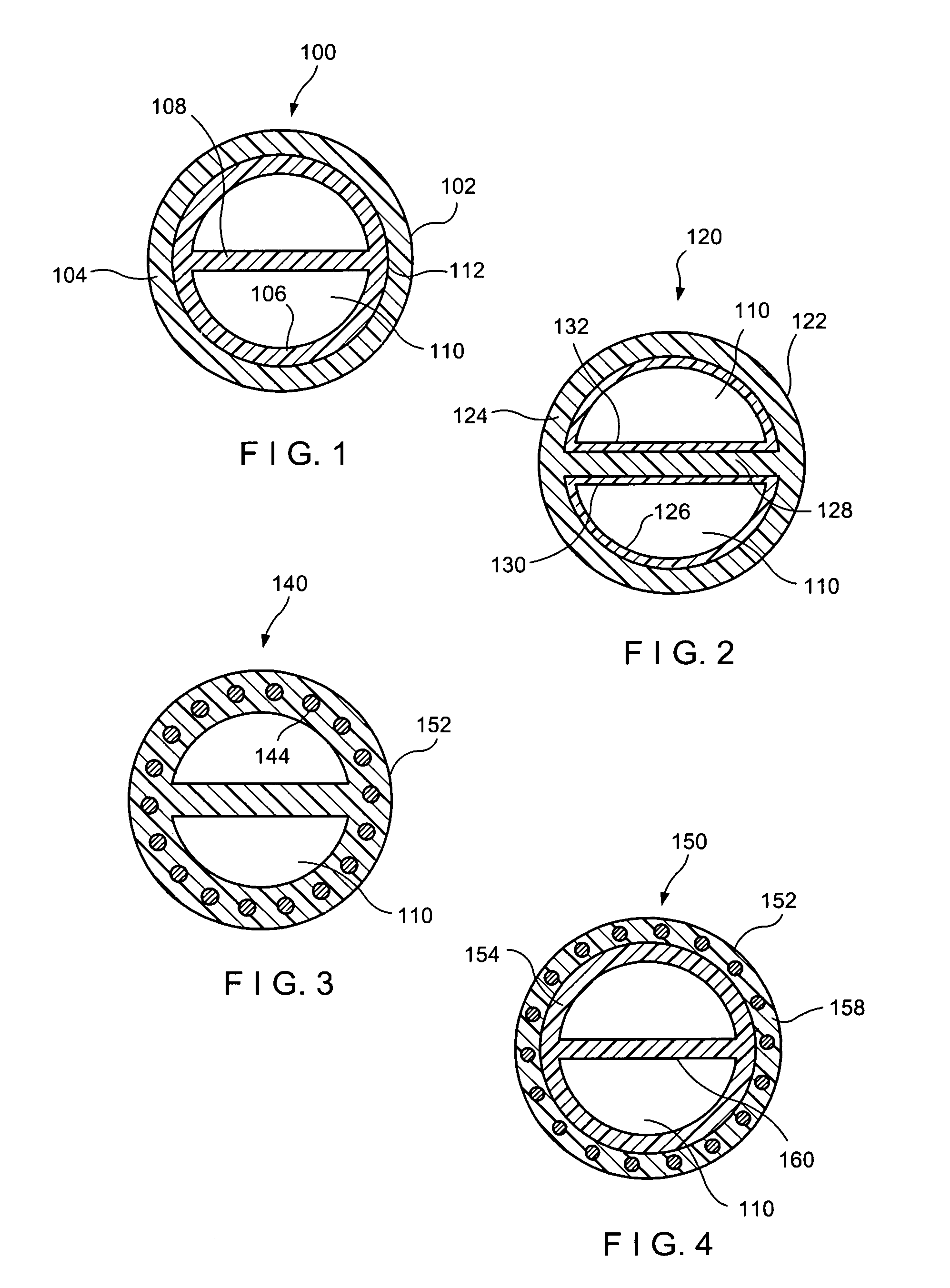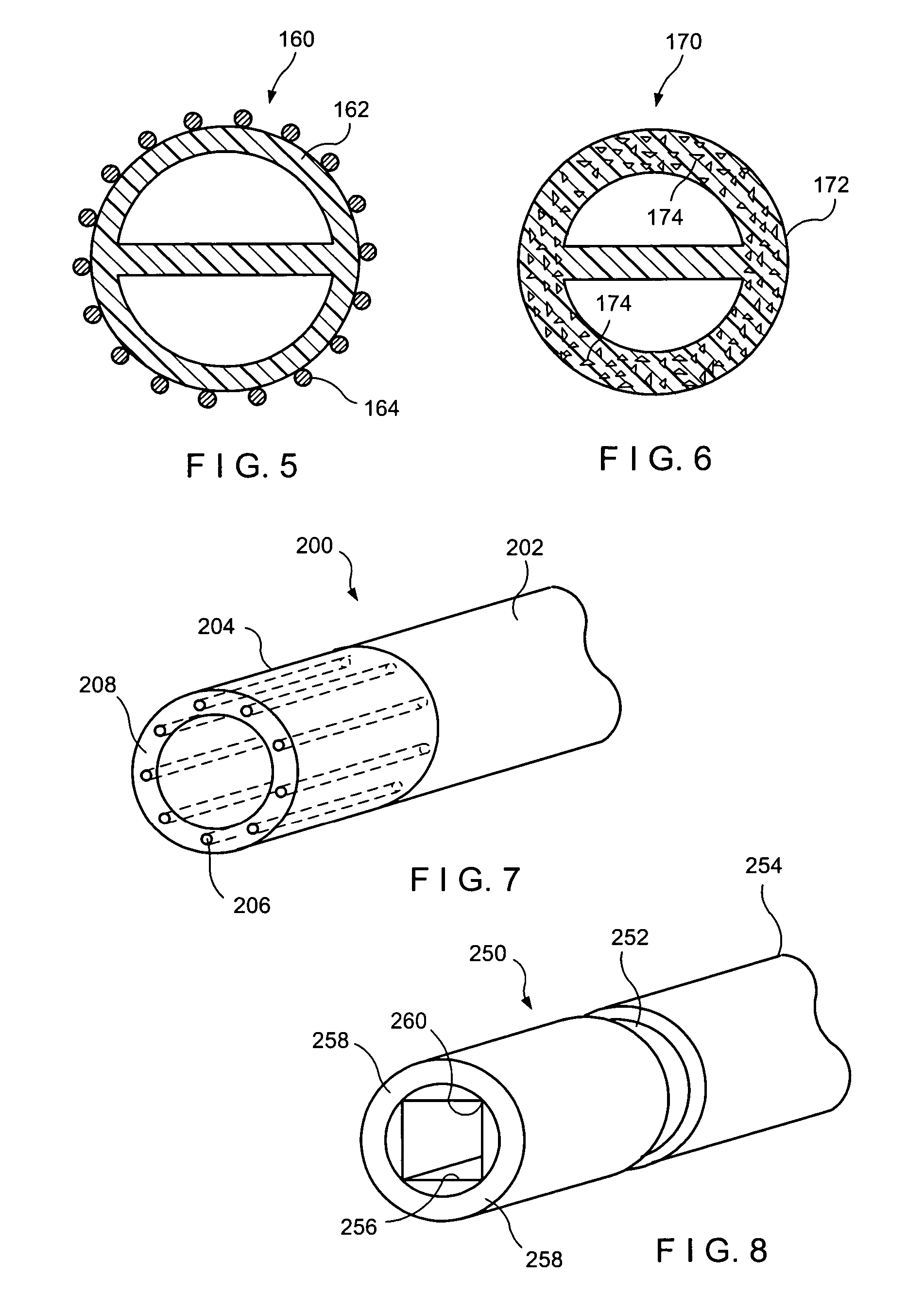Reinforced venous access catheter
a venous access catheter and reinforcement technology, applied in the direction of catheters, multi-lumen catheters, coatings, etc., can solve the problems of limited structural strength, limited amount of pressure and flow rate that the catheter can support without damage, and inpractical and/or dangerous to insert and remove the catheter and the needl
- Summary
- Abstract
- Description
- Claims
- Application Information
AI Technical Summary
Benefits of technology
Problems solved by technology
Method used
Image
Examples
Embodiment Construction
[0014]The present invention may be further understood with reference to the following description and the appended drawings, wherein like elements are referred to with the same reference numerals. The invention is related to medical devices used to introduce a contrast media fluid into a patient, preferably at high pressure and with a large flow rate. Specifically, the devices according to the invention may be used to inject the contrast media using a PICC.
[0015]As described above, where repeated access to the vascular system is required, a semi-permanent central venous catheter may be inserted in a vein kept in place for up to two years. A PICC typically comprises a flexible elongated portion tunneled from a remote peripheral location (an arm or leg) to a location near the heart. The proximal end of the PICC may be accessed via a port placed, for example, subcutaneously in the arm or chest of the patient or which may remain outside of the body.
[0016]As would be understood by those ...
PUM
| Property | Measurement | Unit |
|---|---|---|
| flow rate | aaaaa | aaaaa |
| burst pressure | aaaaa | aaaaa |
| flexible | aaaaa | aaaaa |
Abstract
Description
Claims
Application Information
 Login to View More
Login to View More - R&D
- Intellectual Property
- Life Sciences
- Materials
- Tech Scout
- Unparalleled Data Quality
- Higher Quality Content
- 60% Fewer Hallucinations
Browse by: Latest US Patents, China's latest patents, Technical Efficacy Thesaurus, Application Domain, Technology Topic, Popular Technical Reports.
© 2025 PatSnap. All rights reserved.Legal|Privacy policy|Modern Slavery Act Transparency Statement|Sitemap|About US| Contact US: help@patsnap.com



